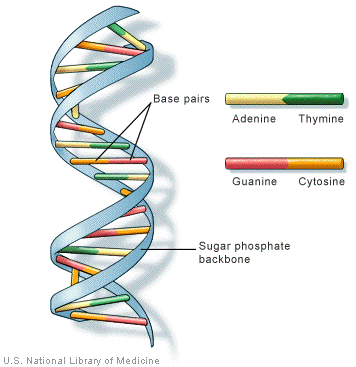Genetic Evidence: A mule is a species hybrid, the offspring of a donkey and a horse. It is a cross between genetically dissimilar individuals. By its very existence it poses two questions. How can two clearly distinct species hybridize? Since they can form viable, vigorous offspring, why are these offspring sterile? The answers to the enigma of the mule are wrapped up in the theory of evolution. The hereditary material of the two species is quite evidently sufficiently similar for fertilisation to occur and for the normal development to proceed under the joint control of the genes from both species. The formation of normal gametes (sperm / eggs) requires however the pairing of similar or homologous chromosomes. Since the chromosomes of these two species differ both in number and composition, normal pairing or synapsis cannot take place. From that point onward normal gamete formation is disrupted. The interpretation is that these species trace back to a common ancestor in the not to distant past, and that their genetic materials are still sufficiently similar to permit normal fertilisation and development. However, during the course of evolution their chromosomes and genes have diverged to such a degree that they are no longer similar enough to form normal gametes.
The study of the chemical nature of the chromosomes from species ranging from viruses and bacteria to higher plants and animals has shown that they are DNA or deoxyribonucleic acid and RNA or ribonucleic acid.
 |
| DNA |
Chemically very similar, both have a backbone of a long chain of alternate sugar and phosphate molecules with the purine and the pyrimidine bases attached to the sugars as side groups. The differences lie in the sugar, deoxyribose in DNA and ribose in RNA, and in one of the four bases. Both have the purines, adenine and guanine, and the pyrimidine, cytosine, in common, but in DNA the other pyrimidine base is thymine, while in RNA it is uracil. In all but a few cases DNA is the hereditary material while the RNA ordinarily seems to mediate protein synthesis. The simple fact that the ultimate genetic material in nearly all species can be represented by a single type of compound, the DNA, points up to the fundamental similarity among all living things. The problem eventually will be to discover how DNA patterns have changed in the course of time to give rise to the great diversity of living species.
No comments:
Post a Comment